Why M.O.M.’s Always Right
One saying many of us heard growing up is: “Mom’s always right.”
These days, I find myself repeating a similar mantra. Except in my case, I’m referencing “M.O.M.” – as in “Manageable Outcome Measurement.” In the 25+ years I’ve spent helping nonprofits get a handle on their outcomes, I’ve grown increasingly convinced that developing a manageable plan is the key to success.
Too often, organizations fall prey to the belief that more is better. In reality, at least based on my experiences, less is more. Focusing on collecting a few key pieces of information, and making a point to review and learn from them, is often the difference between success and frustration.
So as you embark on your next outcome measurement endeavor, remember “M.O.M.’s always right.” And ask yourself, “Is this really something we can feasibly and consistently track and learn from?” If the answer is, “I’m not sure,” then find a way to pare it down.
[back to top]
Outcomes vs. New Years Resolutions
Each January, I can’t help but notice the many parallels between outcomes and New Years resolutions.
Whether you’re a resolution-maker, program participant, or nonprofit professional trying to implement organizational change:
- Sometimes motivation is not enough.
- Success often depends on support from others.
- Structure is key to reinforce new habits.
- Resources can help keep you on track.
- Sometimes a fresh look is all it takes for things to finally click.
It can be reassuring when facing any challenge to know you’re not alone, and to have a plan for getting help and reinforcing new habits. Whether you seek support from a consultant, workshop, book, or colleague, I encourage you to find ways to keep plugging along. Otherwise, your efforts risk going the way of those forgotten New Years resolutions.
[back to top]
Don’t Let Your Tomatoes Rot
Can you imagine a farmer spending months tending to his crops, only to let them rot before anyone can enjoy them? Hardly. Yet when it comes to collecting data, many organizations do just that.
They toil away setting up plans to deliver services and track results. They pour sweat and tears into data collection. Then, once the data rolls in, they let it sit on a shelf instead of using it to inform decisions and future planning.
Don’t let your data turn into a bucket of rotten tomatoes. Ensure you set aside time to review and discuss it at key points in your organizational cycle. Put it on the agenda at your monthly supervisory meetings, quarterly board meetings, and seasonal retreats. Include it in your annual reports and donor appeal letters. Otherwise, there’s really no point in collecting it.
[back to top]
Your Program’s GPS: Don’t Leave Home without It
“I don’t know where we’re going, but we’re making great time!”
I recently came across this quote, and found it perfectly captures the bizarre way many nonprofits approach program planning and implementation.
You’d be hard pressed to find folks willing to embark on a road trip with absolutely no idea where they might end up. Yet beginning a program without clarity about the intended outcomes is essentially the same thing.
In order to use a GPS, you need to enter your desired end point. Along the way, you may need to “re-calibrate” due to unexpected roadblocks or opportunities, but the GPS always keeps in mind where you want to end up.
Having an outcome-based program plan accomplishes the same thing. It gives you room to make adjustments along the way, but ensures you keep a constant eye on your final destination.
So the next time you’re tempted to begin a program without a clear idea of your intended outcomes, remember your reaction to the quote above. And ask yourself if you really want to be someone who spends time and energy on a trip with no clear purpose.
Click here to download IQ’s logic model template.
[back to top]
How to Throw the Perfect Dinner Party
Anyone who has planned a dinner party knows you must be mindful of who will be gathered around the table. What are their likes and dislikes? Do they have any dietary restrictions? Have past experiences with other dinner parties skewed their expectations positively or negatively?
Bottom line, adapting to your audience is key. It allows you to shop for palate-pleasing ingredients, and avoid items that will go untouched. (Anyone who has attempted to serve meat to a vegetarian knows how that ends up…)
Successfully planning a program requires similar consideration. It must start with an understanding of who you’re going to serve, and what their needs, interests, and limitations are. Everything else should follow from there.
Otherwise, you risk wasting a lot of time and energy preparing services that nobody wants and needs, or worse yet, that have a negative effect.
[back to top]
Making S.W.E.L.L. Surveys
I like Family Feud as much as the next person, but I am not a big fan of surveys…at least not as a first resort when it comes to outcome measurement.
For some reason, whenever I discuss data collection possibilities with clients and workshop attendees, they always jump to surveys as their first choice. (I’m including “Pre & Post Tests” as part of the “survey” category.)
But to me, these kinds of tools should be a last resort – not because their not valuable, but because they’re often unnecessary in basic outcome measurement. Frequently, there are equally viable options that don’t take as much time and effort to execute. Plus, surveys require a certain level of expertise to successfully design and implement.
That said, if you’ve explored all of the other possible ways you might be able to collect data, and surveys are simply your best option, then please keep my S.W.E.L.L. survey factors in mind.
S – Style of Questions
W – Word Choice
E – Environment
L – Layout of Form
L – Length of Form
Mistakes made in one or more of these areas can lead to frustrated constituents and/or useless information. And “survey says” – that’s not fun for anyone!
[back to top]

